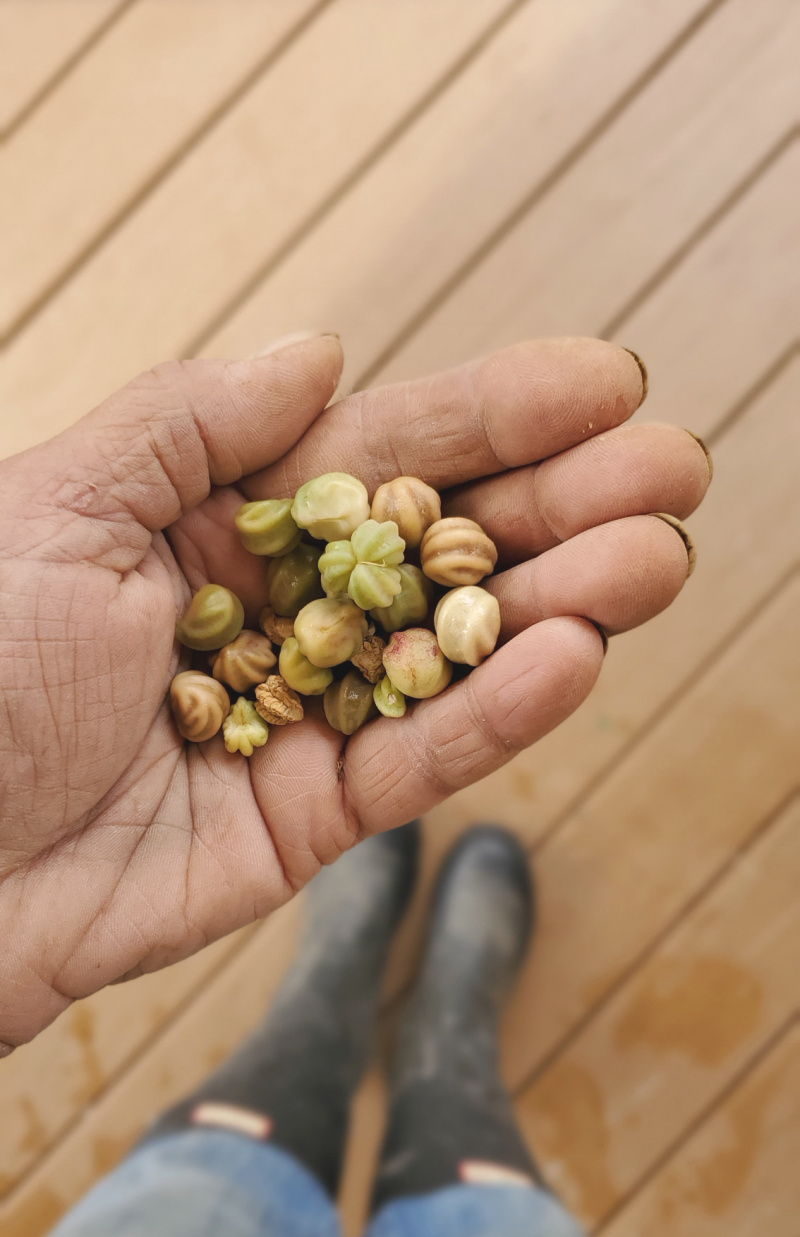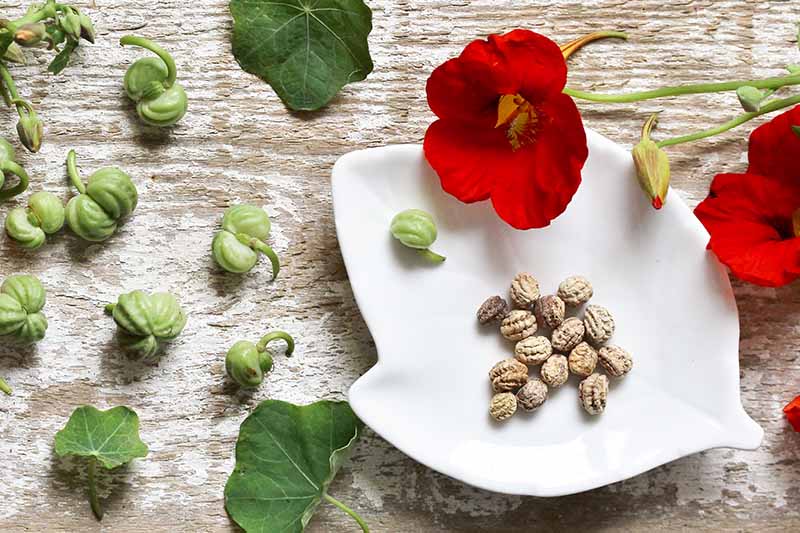Why Save Nasturtium Seeds?
Saving nasturtium seeds is a cost-effective and rewarding way to preserve the beauty of these delicate flowers. By learning how to save nasturtium seeds, gardeners can enjoy the benefits of having a consistent supply of their favorite varieties, without relying on commercial seed sources. Moreover, saving seeds allows gardeners to share their unique nasturtium varieties with fellow enthusiasts, fostering a sense of community and cooperation. Additionally, saving seeds helps to preserve the genetic diversity of nasturtiums, ensuring that these lovely flowers continue to thrive for generations to come. With the ability to save seeds, gardeners can also experiment with new nasturtium varieties, creating unique and vibrant blooms that add beauty and character to any garden.
Understanding Nasturtium Seed Production
Nasturtium plants produce seeds through a process that involves flowers, pollination, and seed maturation. The journey begins with the formation of flowers, which are typically brightly colored and fragrant, attracting pollinators like bees and butterflies. As these pollinators visit the flowers, they transfer pollen, allowing the plants to fertilize and produce seeds. After successful pollination, the flowers will begin to wilt, and the seed pods will start to form. The seed pods will continue to mature and dry, eventually splitting open to reveal the seeds inside. Understanding this process is crucial when learning how to save nasturtium seeds, as it allows gardeners to identify the optimal time for harvesting and ensure the seeds are mature and viable.
How to Identify Ripe Nasturtium Seeds
Identifying ripe nasturtium seeds is a crucial step in the process of saving seeds. Ripe seeds are typically brown or tan in color, and have a hard, dry outer shell. They should be dry to the touch, with no signs of moisture or stickiness. Another indicator of ripe seeds is the seed pod itself, which will turn brown and split open, revealing the seeds inside. It’s essential to harvest seeds at the right time, as unripe seeds may not germinate properly. When learning how to save nasturtium seeds, it’s vital to develop an eye for identifying ripe seeds, as this will ensure the best possible results for future germination and growth.
The Art of Harvesting Nasturtium Seeds
Harvesting nasturtium seeds requires careful attention to detail and a gentle touch. The best time to harvest seeds is in the morning, after the dew has dried but before the heat of the day. This helps prevent moisture from affecting the seeds. When harvesting, gently grasp the seed pod and twist it gently to release the seeds. It’s essential to handle the seeds carefully to avoid damaging them. One effective method for collecting seeds is to place a paper bag or envelope under the seed pod and gently tap it to release the seeds. This ensures that the seeds are caught and prevents them from being lost. When learning how to save nasturtium seeds, it’s crucial to develop a gentle and patient approach to harvesting, as this will help ensure the best possible results for future germination and growth.
Drying and Cleaning Nasturtium Seeds
Drying and cleaning nasturtium seeds is a critical step in the process of saving seeds. Proper drying and cleaning help to prevent mold and bacterial growth, ensuring that the seeds remain viable for future germination. One effective method for drying nasturtium seeds is air-drying, where the seeds are spread out in a single layer on a paper towel or cloth, allowing them to dry slowly and naturally. Desiccants, such as silica gel, can also be used to absorb any excess moisture. When cleaning the seeds, gently remove any debris or chaff using a fine-mesh sieve or a soft-bristled brush. This helps to prevent any contaminants from affecting the seeds during storage. By drying and cleaning nasturtium seeds properly, gardeners can ensure that their seeds remain healthy and viable, making it easier to learn how to save nasturtium seeds and enjoy their beautiful blooms for years to come.
Storing Nasturtium Seeds for Long-Term Preservation
Proper storage is essential for maintaining the viability of nasturtium seeds. When learning how to save nasturtium seeds, it’s crucial to select the right container, label it correctly, and store it in a suitable location. Glass jars or paper envelopes are ideal containers for storing nasturtium seeds, as they provide a dry and airtight environment. Be sure to label the container with the date, seed variety, and any other relevant information to ensure easy identification. When storing the seeds, choose a cool, dry location, such as a cupboard or drawer, away from direct sunlight and moisture. Avoid storing seeds in areas prone to high temperatures, humidity, or exposure to pests. By following these storage guidelines, gardeners can ensure that their nasturtium seeds remain viable for years to come, making it easier to share and enjoy these beautiful flowers.
Tips for Successful Nasturtium Seed Germination
When learning how to save nasturtium seeds, it’s essential to understand the key factors that influence successful germination. To increase the chances of germination, sow nasturtium seeds at a depth of about 1-2 inches, and ensure the soil is moist but not waterlogged. Nasturtium seeds require a soil temperature of around 60-70°F (15-21°C) to germinate, making spring or early summer an ideal time to sow. Additionally, provide adequate moisture during the germination period, but avoid overwatering, which can lead to rot and poor germination. By following these guidelines, gardeners can improve the chances of successful germination and enjoy a bountiful harvest of nasturtium flowers. Remember, saving nasturtium seeds is a rewarding process that requires attention to detail, and with the right techniques, anyone can learn how to save nasturtium seeds and enjoy these beautiful flowers for years to come.
Common Mistakes to Avoid When Saving Nasturtium Seeds
When learning how to save nasturtium seeds, it’s essential to be aware of common mistakes that can compromise the viability and quality of the seeds. One of the most critical mistakes to avoid is inadequate drying, which can lead to mold and fungal growth. Ensure that the seeds are completely dry before storing them to prevent moisture-related issues. Another mistake is poor storage, such as using containers that are not airtight or storing seeds in areas with high humidity or temperature fluctuations. Incorrect labeling is also a common mistake, which can lead to confusion and misidentification of seed varieties. Additionally, failing to clean the seeds properly can lead to contamination and reduced germination rates. By being mindful of these common mistakes, gardeners can ensure that their nasturtium seeds remain healthy and viable, making it easier to learn how to save nasturtium seeds and enjoy these beautiful flowers for years to come.








